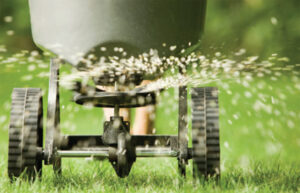
Broadleaf Perennial Weed Control – First, attack the weeds; if you don’t get rid of the weeds this fall, your lawns will surely regret it next spring. Control perennial broadleaf weeds with selective liquid herbicide (kills the weeds, not the grass). Liquid applications are more effective than granular “weed & feeds” and are available in ready to spray, hose-end sprayers and concentrates to be mixed with water in your pump sprayer. Or you can always rent one of our liquid drop-spreaders. It is very important that this be done soon while the clover and dandelions are still growing actively, and so can be killed easily. Always check to be sure that no rain is in the forecast for at least 12 hours before applying, and do not mow within 24 hours before or after application.
Fertilizing in the Early Fall – Cool season lawns should be fed twice in the fall to promote root growth, deep green color and improved turf density. This early fall feeding is very important in that it’ll help promote new tiller growth from the crowns of the summers stressed turf to thicken up the lawn. It is a granular, slow-release, organic-based fertilizer, and can be done in conjunction with the weed control applications or fall overseeding.
Seeding/Overseeding Lawns in September – All lawns need some seed every fall if they are to be maintained as vigorous and healthy. The Lawn Depot buys directly from the Pacific NW growers, using the newest cultivars in all of our mixes and blends. New lawns should be seeded heavily (along with heavy core aeration) and older lawns can be upgraded by overseeding to get these newer varieties of into the lawn. Lawns that have more than 4-6 hours a day of shade should be totally overseeded each fall. And even lawns that are thick and thriving need SOME overseeding each fall. There are high traffic areas, or areas where tree roots interfere with grass’ ability to establish good, deep root systems, or areas that have been diminished by turf disease or insects and need a freshening. We encourage all of you to take advantage of the wonderful growing conditions this (and every) fall, and add new seed to your existing lawns. You’ll love the results.
Liming and/or Core Aerating in the Fall – Regular (at least once or twice each year) core aeration and liming are soil conditioning activities that greatly enhance turf growth in our typically acidic, dense soils. Bucks County is beautiful, but we’ve basically got lousy soils. We have to amend and cultivate them regularly. This, we call conditioning the soil, and the more you adhere to the religion of regular soil conditioning, the better (by far) your lawn will perform. So, either do this yourselves or give us a call and have our Turf Management guys, with their “best equipment available” do the job right, at the correct time.
Checking for Grub Damage in your Lawn – Grubs feed on grass roots. Grubs are the larval stage of many insect pests, most notably Japanese beetles. Grubs hatch in late summer in concentrated areas of lawn near where the adult females fed in early summer on shrub and tree leaves. Because grass roots are dormant in the summer, these voracious little grubs can cause irreparable damage to turf. Thus, it will need to be renovated and repaired. Much of the control over these devastating pests can be credited to the fact that most of us now treat grubs preventatively (like crabgrass) in May and June with granular MALLET or MERIT, which kill the hatching grubs before they can damage the lawn. But IF you didn’t apply MALLET/MERIT this spring, and IF you had a significant population of Japanese beetles in June/July, and IF you have areas of your lawn that haven’t greened back up along with the rest of the lawn, and IF, when you scratch vigorously at these patches with a stiff rake and the turf rolls back easily, exposing ½” long, off-white semi-circular worms in the soil … YOU’VE GOT A GRUB PROBLEM. Immediately apply granular BIO-ADVANCED’s 24 Hour (DYLOX) Grub Killer and water in thoroughly, and begin renovating the damage (core aeration, heavy overseeding). Then keep the seed wet with DAILY WATERING. And next spring, apply MALLET or MERIT in May or June, so you won’t have this problem again.
Checking Lawns for Grub Damage – Now is when damage caused by grubs will start to show. If you had a lot of Japanese beetles in July, or if you have areas of your lawn that seem to be growing lighter in color than the rest of the lawn, and which, if scratched or raked vigorously, peels back revealing ½” long off-white worms, you have a grub problem. You must apply DYLOX granular insecticide immediately to the whole section of the lawn involved, water it in thoroughly, and then, as soon as possible, scratch out dead turf and reseed.
